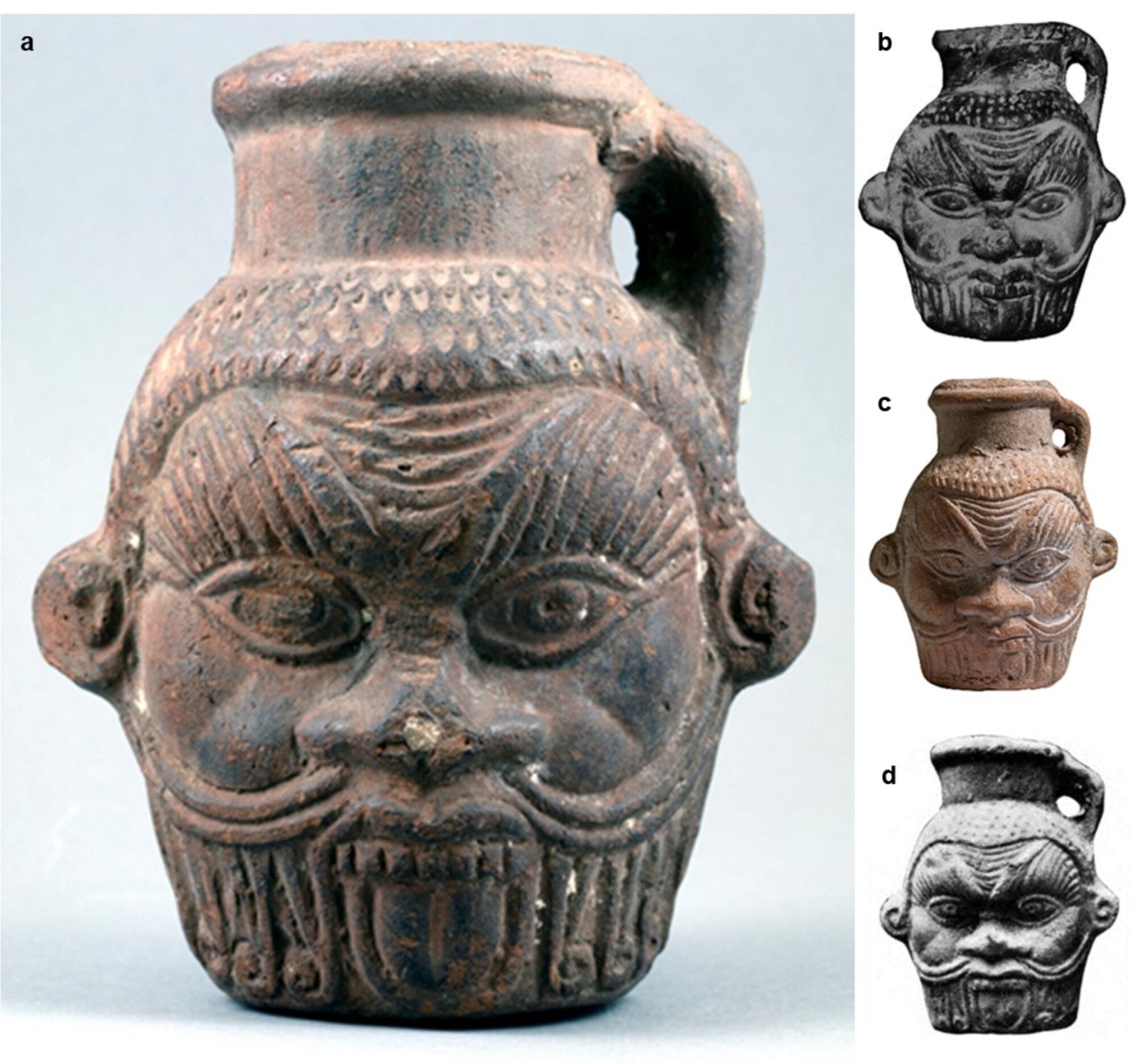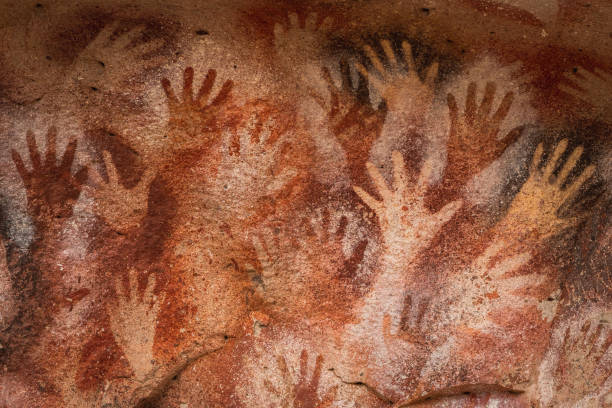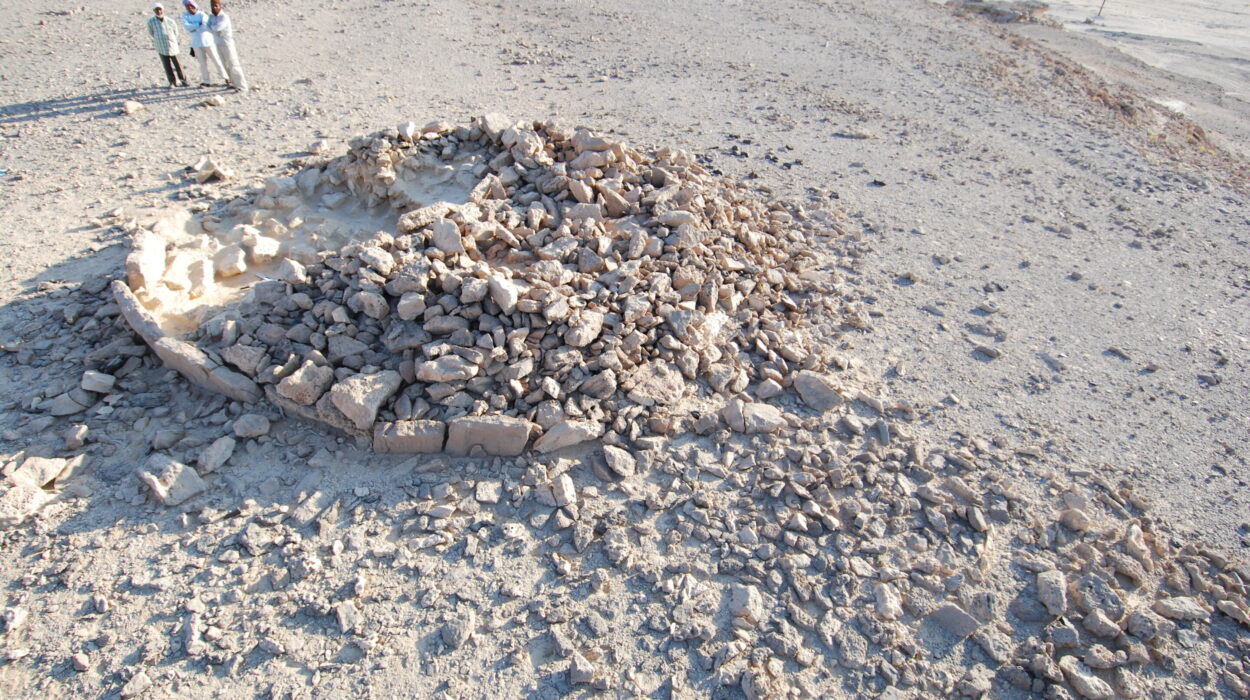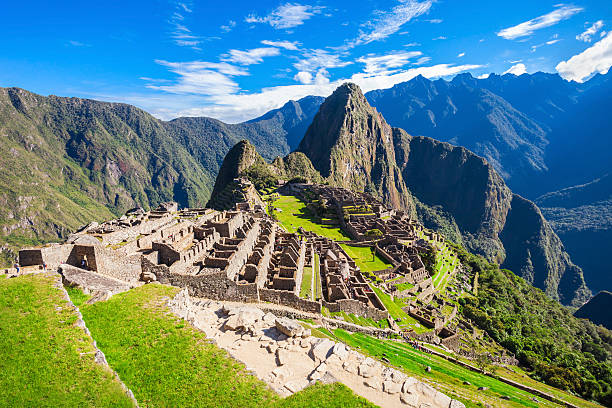The secrets of ancient Egyptian culture have long fascinated scholars and enthusiasts alike, with their rich mythologies, monumental architecture, and intricate rituals. But now, a groundbreaking discovery made by a University of South Florida (USF) professor is shedding new light on one of the most enigmatic aspects of ancient Egyptian religious practices: the use of hallucinogens in rituals.
In a study recently published in Scientific Reports, Professor Davide Tanasi and his research team uncovered the first-ever physical evidence of hallucinogens in an Egyptian artifact—the Bes mug. This discovery validates long-standing myths and written records of ancient Egyptian rituals, providing an unprecedented glimpse into the mystical and medicinal practices of a civilization that existed over 2,000 years ago.
The Bes mug, one of the few remaining relics of its kind, was donated to the Tampa Museum of Art in 1984. It features the likeness of Bes, an ancient Egyptian god or demon associated with protection, fertility, healing, and magic. For centuries, experts have speculated about the purpose of these decorated mugs, which were commonly used in ancient Egyptian culture. While myths and ancient texts hinted at their role in magical rituals and religious ceremonies, no one had ever definitively identified their contents or confirmed their exact use until now.
The Mystery of Bes Mugs: A Glimpse into Ancient Egyptian Life
Bes was a unique deity in ancient Egyptian mythology, often depicted as a dwarf-like figure with a grotesque, lion-like face. Unlike other gods in the Egyptian pantheon, Bes was not a figure of grandeur or celestial power; instead, he was considered a guardian who protected the home, ensured fertility, and aided in childbirth. His image adorned various household items, including pottery, statues, and most notably, Bes mugs—distinctive ceramic vessels with his likeness. These mugs were thought to be associated with ritualistic practices, but their exact purpose remained elusive for centuries.
Over time, Egyptologists and archaeologists proposed several theories about the role of these mugs. Some suggested that they were used for everyday purposes, such as drinking sacred water, milk, or beer. Others believed that they had a more specific religious function, serving as vessels for offerings or as tools for magical rituals. Despite extensive speculation, the true nature of these mugs remained unknown, and the contents of the vessels were a mystery.
Tanasi’s Discovery: A Chemical Clue to Ancient Egyptian Rituals
It was Professor Tanasi, in collaboration with USF researchers and partners from the University of Trieste and the University of Milan, who finally cracked the mystery. As part of the Mediterranean Diet Archaeology project, Tanasi and his team employed advanced chemical and DNA analysis techniques to examine a Bes mug in the Tampa Museum of Art collection. The artifact was scraped, and the inner walls were carefully analyzed using a range of cutting-edge tools.
The results were astonishing. For the first time, the researchers were able to identify the chemical signatures of the components that once filled the mug, revealing an intoxicating concoction made from various plants, bodily fluids, and alcohol. The mixture contained psychotropic and medicinal substances, providing scientific evidence that the mug was used in ancient Egyptian magical and religious rituals.
A Psychedelic Cocktail: Ingredients of the Ancient Concoction
The combination of substances found in the Bes mug points to a complex, ritualistic drink designed to induce altered states of consciousness. According to the chemical analysis, the beverage contained several plant-based ingredients, each known for their medicinal and psychoactive properties. Among the substances identified were honey, sesame seeds, pine nuts, licorice, and grapes—ingredients that were commonly used in ancient Egyptian beverages to flavor or color the drink, possibly giving it a blood-like appearance.
But the most intriguing part of the discovery was the identification of psychotropic compounds, suggesting that the ancient Egyptians intentionally created a drink capable of inducing hallucinatory or dream-like states. The presence of these substances aligns with long-held theories about the use of such beverages in magical or spiritual rituals, particularly those associated with fertility and childbirth.
“This research teaches us about magic rituals in the Greco-Roman period in Egypt,” said Branko van Oppen, curator of Greek and Roman art at the Tampa Museum of Art. “Egyptologists have long speculated that the Bes mugs were used in rituals related to pregnancy and fertility, and our findings confirm that the ingredients in these concoctions were likely used to induce altered states of consciousness, possibly in connection with childbirth, a perilous process in the ancient world.”
The Bes Chambers and the Fertility Rituals
The study also provides crucial insights into the purpose of the Bes mugs within the broader context of ancient Egyptian religious practices. Tanasi and his team believe that these mugs were used in the so-called Bes Chambers, a sacred space in Saqqara, located near the Great Pyramids of Giza. These chambers were believed to be places where people went to seek divine protection, particularly in matters of fertility and childbirth.
Pregnancy in ancient times was fraught with danger, and many women turned to magic and religious rituals for reassurance and safety. The combination of hallucinogens, alcohol, and medicinal plants found in the Bes mug could have been used to induce dream-visions, offering pregnant women or their families a sense of comfort and connection to the divine. In this context, the drink may have been part of a larger fertility ritual, allowing participants to commune with the gods and seek divine intervention for a successful pregnancy.
“This study provides scientific proof that the myths surrounding Egyptian rituals have some basis in reality,” Tanasi remarked. “It helps us understand the rituals that were likely carried out in the Bes Chambers in Saqqara and how these practices were tied to fertility and the dangers associated with childbirth. The chemical evidence we’ve uncovered offers a unique perspective on the way these ancient people used psychoactive substances in their religious and magical practices.”
The Significance of the Discovery
Tanasi’s research offers more than just a fascinating glimpse into ancient Egyptian rituals—it also underscores the importance of interdisciplinary approaches to archaeology and history. By combining chemical analysis, DNA testing, and historical research, Tanasi and his team have managed to uncover an important piece of the puzzle of ancient Egyptian religion.
The discovery of hallucinogens in the Bes mug challenges the traditional understanding of ancient Egyptian religious practices, suggesting that the Egyptians were not only interested in the physical world but also in the manipulation of consciousness through rituals and psychedelics. This new knowledge opens the door to further exploration of the role that psychoactive substances played in ancient cultures and their use in rituals across different civilizations.
“The magic rituals and beliefs that shaped ancient Egyptian society are more complex than we ever imagined,” said Van Oppen. “This discovery challenges our understanding of what these rituals looked like and the ways in which ancient Egyptians sought to understand and influence their world through spiritual practices.”
A Window into the Past: The Enduring Mystery of Ancient Egypt
As scholars continue to probe the mysteries of ancient Egypt, the discovery of hallucinogens in the Bes mugs provides an important piece of the puzzle. It not only sheds light on the religious practices and rituals of a civilization that continues to captivate us but also demonstrates the potential of modern scientific techniques to uncover truths long hidden in the artifacts of the past.
Tanasi’s research is a testament to the power of science to uncover the secrets of ancient cultures. By examining the physical evidence left behind by the Egyptians, we are able to peer into their world and gain a better understanding of their beliefs, rituals, and daily lives. This discovery challenges our perceptions of ancient civilizations and invites us to reconsider the ways in which ancient peoples used substances to connect with the divine, heal, and protect themselves from the dangers of the world around them.
As the study of ancient Egyptian rituals continues, we can only imagine what other secrets may still lie hidden within the artifacts of this fascinating civilization. But for now, the discovery of hallucinogens in the Bes mugs stands as a remarkable achievement, providing a new and profound understanding of the mystical and medicinal practices of ancient Egypt.
References: Davide Tanasi et al, Multianalytical investigation reveals psychotropic substances in a ptolemaic Egyptian vase, Scientific Reports (2024). DOI: 10.1038/s41598-024-78721-8
The Bes mug is on display now at the Tampa Museum of Art and can be viewed in the exhibition, “Prelude: An Introduction to the Permanent Collection.” View a 3D model of the Bes mug produced by the USF Institute for Digital Exploration.






